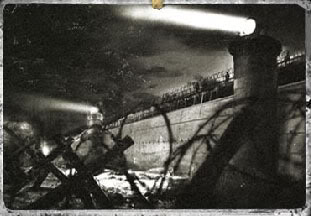
The Red Curtain (or referred by some as the Russian Wall) was a heavily fortified, military barrier built by Russia after the Great War that greatly expand across the Russian-European border stretching from the Baltic Sea to the Black Sea. Internationally it was noted in record to be longer than the Great Wall of China.
History[]
In the aftermath of the Great War, Russia was on the brink of numerous unrest and turmoil. The unrest reached its peak in August 1921 when the Russian authorities discovered and executed French spies for allegedly encouraging insurrection in which it worsened European-Russian relations. The Russian government grew weary of Western Europe, fearing that their "anti-imperialist" neighbors were trying to subvert their rule.
After a month since the executions, in September, Russia entered into an isolationist state in which the government completely sealed the borders and closed communication from the outside world. Construction of the Red Curtain began with a barbed-wire barrier being erected along the length of the Russian-European border before it was finally reinforced with solid concrete by 1926.[1]
In December 1949, the Chimera breached the barrier and invaded Europe. At some point of that year, the United European Defense led an attempted airstrike on the Red Curtain but to only sustain heavy losses from Chimeran anti-aircraft fire. Only eighty percent of downed VTOL crew members were rescued from the failed raid by efforts of their squadron leader, Eric Hudson.[2]
Since the success of Operation Overstrike in mid-1951, human Allied forces have overcome the Chimera in Eastern Europe and were nearing the ruined remains of the Red Curtain in January 1953, with the intention to enter into Russia.[3] However, their attempts to break through the Red Curtain were dashed following the downfall of the United States later in the year, and Allied forces were pushed back by the Chimera as of 1957.[4]
